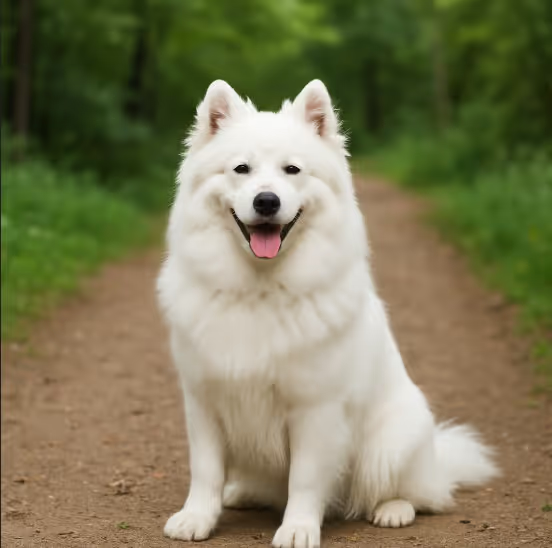The American Eskimo Dog, often affectionately called the “Eskie,” is a striking, fluffy white companion known for its intelligence, alertness, and friendly demeanor. Despite the name, the breed originated in Germany as part of the Spitz family and was popularized in the U.S. as a circus performer in the early 20th century. Eskies come in three sizes—Toy, Miniature, and Standard—and make excellent watchdogs and family pets. They thrive on companionship and mental stimulation, making them ideal for active households.

Though often associated with North America, the American Eskimo Dog traces its ancestry to the German Spitz breeds. During the early 1900s, these dogs were frequently seen in circus acts due to their trainability and eye-catching appearance. Renamed during World War I due to anti-German sentiment, the “American Eskimo Dog” became an officially recognized breed in the United States. In 1995, the AKC formally accepted the breed, recognizing three size varieties. Their long-standing reputation for intelligence and loyalty has made them a favorite among families and performers alike.
The American Eskimo Dog boasts a thick, double-layered white or cream coat, a plumed tail that curls over the back, and a wedge-shaped head with erect, triangular ears. Their black nose, lips, and eye rims offer a stunning contrast to their snowy coat.
Eskies require regular grooming to maintain their thick coat and minimize shedding.
While not as hyperactive as some working breeds, American Eskimo Dogs need consistent daily activity.
Highly intelligent and eager to please, Eskies excel in obedience and trick training.
Provide a balanced, high-quality diet that suits their size and energy level.
American Eskimo Dogs are generally healthy, but may be prone to:
When adopting or purchasing an American Eskimo Dog:
Are American Eskimo Dogs good with children?
Yes, they are affectionate and gentle with respectful children. Early supervision is recommended due to their energy.
Do they bark a lot?
Yes, they are known to be vocal. They often bark to alert or express excitement.
Are they hypoallergenic?
No, they shed consistently and are not ideal for allergy sufferers.
How often do they need grooming?
2–3 times weekly brushing is recommended, especially during seasonal sheds.
Can they live in apartments?
Yes—Toy and Miniature sizes can do well in apartments if exercised regularly. Standard size needs more space.